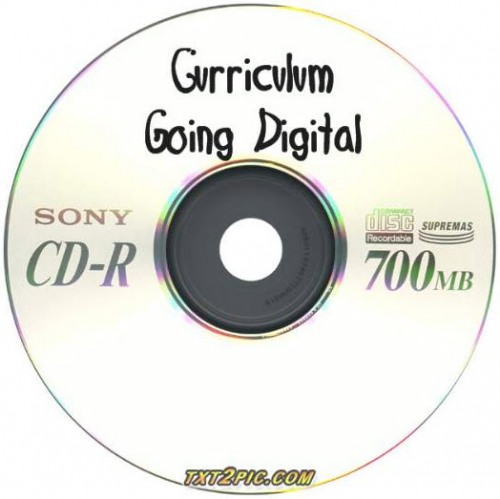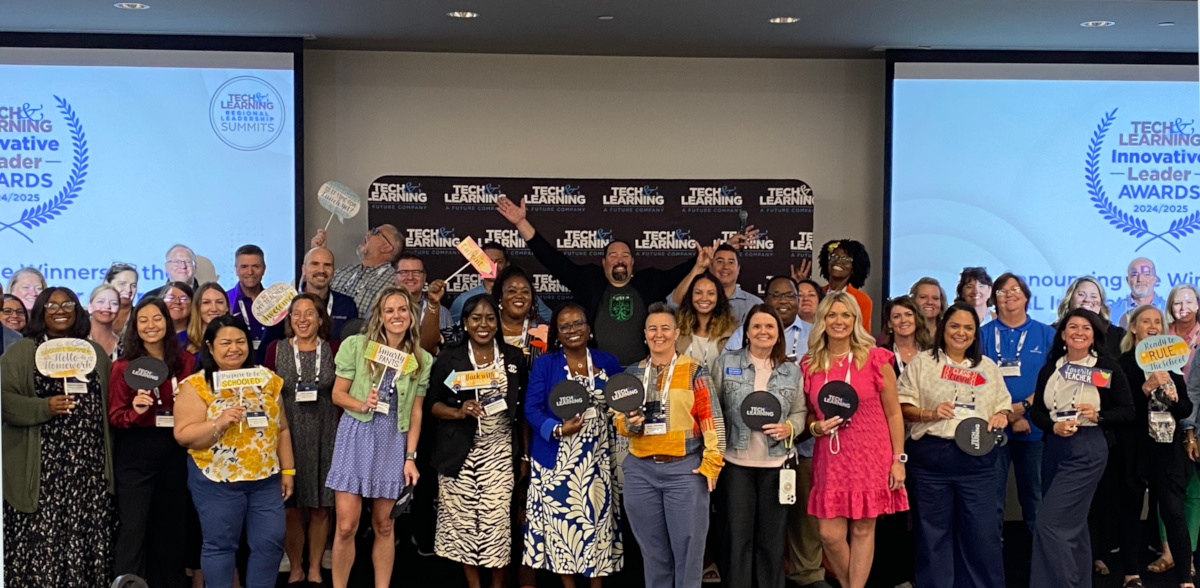Part 1: Going Digital …Ten Points To Consider When Transforming Towards Digital Curriculum by Michael Gorman

Curriculum is going digital and I have some information you will want to consider and even pass on to others! In this series I will explore resources that will open up a world of digital curricula. I start this series with 10 points all educators need to consider before going digital. In later posts, I will introduce you to some pretty cool content that can be part of your new digital curriculum. And yes… I even have textbooks covered! . You can also follow me on twitter (mjgormans) and of course visit my21centuryedtech Blog. Now, enjoy a visit designed to help you reflect and plan the very future of curriculum as it goes digital. Have a great week – Mike
Note – If you will be traveling to MEC in Tempe Arizona or CUE in Palm Springs California this March 2011 please introduce yourself at one of my sessions. I am making the trip from Indiana and will have two presentation at each conference. They include Digital Immigrants and Digital Natives… No Future Left Behind, STEM to STEAM to STEAMIE… Turning Up The Temperature, and A 7 Step Approach to Website Evaluation… A-G.
As we venture into the world of the digital curriculum the security of a real textbook, an item we have all held, grasped, and found comfort in, seems to be endangered. It’s true, the hard copy textbook as we have always known may soon be part of the good old school days of the past. As I reflect on this I wonder at what point did the textbook become such a central part of the curriculum. I am an analog native (I think) and I remember the days of my first schooling in which the resource primarily used was the textbook! It was one of the few resources available in a classroom that had no television, phone, internet connection, computer or interactive white board. There was an occasional Weekly Reader, an almost complete set of ten year old World Book Encyclopedias, an occasional filmstrip to make learning interesting, and a once a month black and white 16 millimeter film that was most engaging when one could see the movie one more time shown backwards. Most content centered around the textbook which, depending on subject, could be brand new… or ten years old. In fact, in many of my classes there was no doubt that the textbook was the curriculum. I remember when I first started teaching over thirty years ago we were reluctant to write curriculum until we set our eyes on the newly adopted textbook.
So… there you have my thoughts on why the textbook has become the center of curriculum and so very difficult to cast aside. As classrooms transform so must the old friend that accompanied us throughout our schooling and much of our teaching. This is not to say that many teachers didn’t venture outside the textbook for various projects, studies, readings, and adventures. I know that I often took the journey, but always realized that my old friend would be at my side… just in case! As we slowly say goodbye to this old companion there must be several ideas we contemplate on our way to the digital curriculum. As we reflect and invite this digital transformation, I am sure we will find a curriculum that is alive, relevant, rich, engaging, rigorous, and timely. We may even find a new friend that will be there for us when we need a little textbook digital style!
There is no question that we need to take those steps towards a digital curriculum, after all we live in a digital world. As we begin to put that hard copy textbook in the recycle bin, we must all develop a better understanding of digital curriculum and what we need as educators to make it a successful reality, a reality that promotes real student learning and achievement. Allow me to share with you my ten thoughts on going digital.
10 Points To Consider When Transforming Toward Digital Curriculum
1. A digital curriculum requires schools to be equipped with the necessary infrastructure and technology to deliver true digital content. This requires adequate bandwidth, wireless broadcasting, and necessary student and teacher personal technology. Do schools supply all of this technology or do we find ways to incorporate technology students already own?
Tools and ideas to transform education. Sign up below.
2. A digital curriculum is much more than a textbook delivered electronically and disseminated through a Xerox job of thousands of copied PDF files. Adopting a digital textbook, whether it be commercial or open source, can only be part of the picture. Transforming to a digital curriculum demands utilizing a textbook as one entity, not the central piece.
3. A digital curriculum requires that thought be given to student access not just at school but in student homes and the general community. There must be deliberate actions set towards building bridges across the digital divide.
4. A digital curriculum requires sustained professional development that allows teachers to learn, collaborate and plan outside of the traditional textbook box. This includes participation in professional learning communities and webinars blended with ongoing professional development within the school or district. In other words, professional development must contain the very attributes sought in the digital curriculum being implemented for students.
5. A digital curriculum should contain a wide variety of resources and content allowing the teacher to plan engaging learning activities. The process of writing standards should be left at the national and state level. After all, most local standards are copied, pasted and possibly edited from the national and state standards. Teachers in the classroom must be given the time to plan learning and contribute activities that are part of an exciting curriculum.
6. A digital curriculum must open up the doors to not just student consumption of content but to student production. Activities must allow students to recreate, publish, remix, and innovate. This interactivity is the key to creating a digital curriculum that is powerful and effective. A digital curriculum allows the creation of a society of creators, innovators, and learners.
7. A digital curriculum should open up the classroom walls and allow for collaboration between classrooms, communities, and cultures. Additionally, online learning should create classrooms that are hybrid in nature, preparing students for avenues of learning found on the web and for their future schooling. Students must learn the online skills necessary to communicate, collaborate, and learn.
8. A digital curriculum must allow for nonlinear learning, differentiated instruction, backward/inverted teaching, as well as instructional components and ongoing assessment that will bring productivity to the classroom. New technologies are able to infuse these attributes into a digital curriculum resulting in student engagement, learning and achievement.
9. A digital curriculum must allow for incorporation of innovative instruction such as STEM, PBL, and NETS technology standards. It is a digital curriculum that has the ability to finally deliver the aspirations of education reformers such as Piaget and Dewey.
10. A digital curriculum must allow students to be at the center of their education with the teacher actively facilitating and orchestrating real student learning. Such a curriculum allows students to contribute and design outcomes. It gives students the necessary ”Drive” (Daniel Pink) to become actively involved and take charge of their education.
You probably thought I forgot about our old friend, the hard copy textbook. Actually, I didn’t. I firmly believe that a digital curriculum will still provide access to a virtual textbook that will provide content that can provide a foundation for necessary understanding. It will be available in a variety of formats to be read on tablet, iPod, Droid, laptop, desktop, or possibly a real piece of paper! As the virtual textbook matures it will become interactive, filled with engaging media, and will be nonlinear. It will remain a good friend… just not the center of the new digital curriculum! As you continue your journey in the world of the 21st century you just may find that the old textbook really was never quite at the center of your curriculum anyway!
Join me in this continuing series of Going Digital. The next in the series will introduce you to an amazing resource that has free open source books you can remix, edit, and share with students in a variety of ways! Please take a moment to visit my 21centuryedtech Blog, filled with infomational, posts, and while you are there subscribe by RSS or email. I also look forward to future posts here at Tech & Learning a great place to learn about the lastest in ed tech. Want to know what else is coming your way in future posts? Then take a look below! In fact you can also give this article a retweet if you scroll to the top! Thanks, until next time… start thinking of ways you can go digital. Have a great week! – Mike
Coming to 21centuryedtech Blog and my posts at Tech & Learning. Be sure to read both if you want to keep up on all my newest posts!
* A Seven Step Approach To Web site Evaluation (A-G) – In this seven part series I will deliver what I believe to be a powerful and meaningful way to teach web site evaluation. It will include downloadable powerpoints, activity sheets, information sheets, posters, and PDF booklets.
* Pushing The Process In Project Based Learning – In this multi-post, readers will discover one of the best places to learn about PBL, learn how to pump up the power of PBL with technology integration, and learn about some of the key highlights of PBL including project development, writing that driving question, and how sports and athletics are really related.
* A Message From An Almost Analog Native - Wait until you hear about my encounter with an almost analog native. This post is written in the style of my Letter From Santa and I Teach Because I Can’t Do Anything Else. Enjoy a message that celebrates real teaching… no, it’s not just 21st century! You will want to share!
